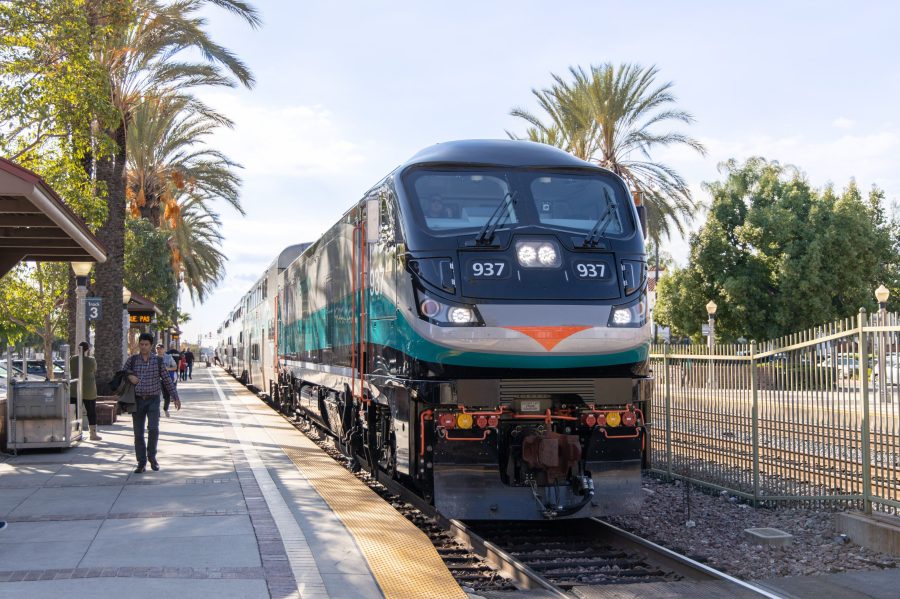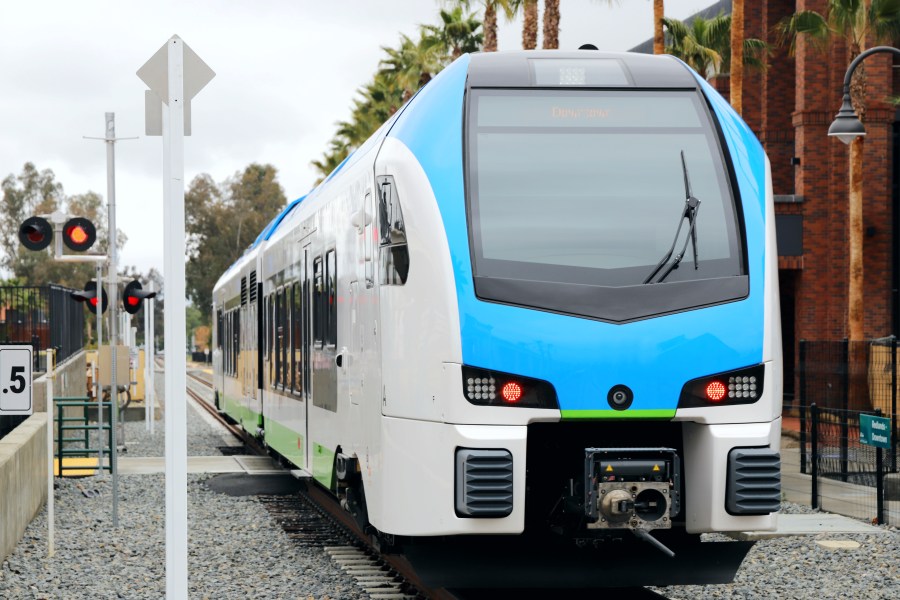In November, Metrolink announced that it would be shutting down service systemwide near the end of the year to allow for essential cleaning, repairs and upgrades along its nearly 550 miles of tracks.
Among those upgrades is a modernization project at Los Angeles Union Station that will replace Depression-era technology with new, state-of-the-art equipment.
Currently, Metrolink uses relay technology from the 1930s that limits the number of trains it can run on multiple tracks as they enter and depart the facility. A new microprocessor-driven signal system will allow for increased capacity during arrivals and departures, which will in turn reduce the number of delays and improve safety throughout the heavily trafficked train corridor, the transit agency says.
The new signal system is part of the final stages of a three-year modernization project at Union Station, according to Justin Fornelli, Metrolink’s Chief of Program Delivery. Union Station is the agency’s central hub and connects six of Metrolink’s lines.
The systemwide shutdown will also allow for other important upgrades and maintenance across multiple Metrolink lines, which Fornelli said will help Metrolink deliver the “safest, most reliable passenger rail experience possible.”
Platforms will undergo concrete repairs, areas and equipment will get fresh coats of paint, canopies and gutters will be cleaned out and new lighting will be added that is tied to emergency power sources. Metrolink said it will also be servicing high-voltage components to reduce the likelihood of power outages.

But the massive systemwide suspension will also allow for major progress to move forward on priority maintenance and repair projects. Most notably, Metrolink will replace old and outdated rail on the Antelope Valley Line, which is responsible for decreased speeds on the winding, sloping path.
Crews will also replace several culverts along the San Bernardino Line which divert rainwater and stormoff underneath the tracks to prevent flash flooding.
The maintenance and improvement projects are part of Southern California’s massive effort to modernize the region’s public transportation service ahead of the 2028 Olympic and Paralympic Games. L.A. will also be the site of the World Rugby Championships in 2031 and 2033.
The Union Station improvements are made possible with funds provided by Metrolink’s Southern California Optimized Rail Expansion (SCORE) capital improvement program.
Eleven SCORE projects are currently underway, with the Union Station improvements and a second project getting checked off the list in 2023. In November, an upgraded signal system was put into place in Orange County between San Clemente and Dana Point.
Additional projects include work on the Antelope Valley and Ventura County lines at the Burbank Junction just north of the Burbank Downtown Station. That project is expected to be completed early next year and will allow for faster speeds through the area. In October, Metrolink announced a major expansion along the Antelope Valley Line, doubling trains on weekends and adding more late-night options during the week.

Metrolink officials say the transit agency has secured $2.4 billion in funding toward its various SCORE projects, but the entirety of the improvements will cost around $10 billion.
All Metrolink trains, including the Arrow Service in San Bernardino County, will be out of service beginning Tuesday, Dec. 26 through Friday, Dec. 29.
Officials said that specific timeframe was chosen because ridership is historically low due to the holidays, schools being out and many employers providing time off.
Alternative transportation will not be provided by Metrolink, but its partner agencies, including Amtrak, will operate during the closure. The Amtrak Pacific Surfliner will operate on a modified schedule, bypassing Union Station on tracks not impacted by the Metrolink closure.
Metrolink has an online hub to help travelers navigate the closure and make alternative plans.
No service or schedule changes will be implemented upon reopening on Dec. 30.
For more information about the closure, click here.






















